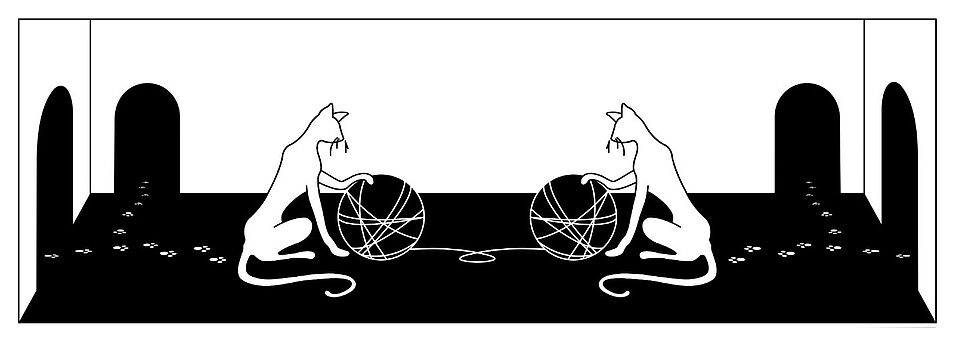Our everyday experience tells us that macroscopic systems obey classical physics. It is therefore natural to expect that quantum mechanics must reproduce classical mechanics in the macroscopic limit. This is known as the correspondence principle, as established by Bohr in 1920 [1]. A simple argument to explain this transition from quantum mechanics to classical mechanics is the coarse-graining mechanism [2]: if measurements performed on macroscopic systems have limited resolution and cannot resolve individual microscopic particles, then the results behave classically. Such an argument, applied to (nonlocal) Bell correlations [3], leads to the principle of macroscopic locality [4]. Similarly, temporal quantum correlations reduce to classical correlations (macroscopic realism) [2] and quantum contextuality reduces to macroscopic non-contextuality [5]. It was strongly believed that the quantum-to-classical transition is universal, although a general proof was missing. To illustrate the point, let us take the example of quantum nonlocality. Suppose we have two distant observers, Alice and Bob, who want to measure the strength of the correlation between their local systems. We can imagine a typical situation where Alice measures her tiny quantum particle and Bob does the same with his and they combine their observational results to calculate the corresponding correlation. Since their results are inherently random (as is always the case in quantum experiments), they must repeat the experiment a large number of times to find the mean of the correlations. The key assumption in this context is that each run of the experiment must be repeated under exactly the same conditions and independently of other runs, which is known as the IID (independent and identically distributed) assumption. For example, when performing random coin tosses, we need to ensure that each toss is fair and unbiased, resulting in a measured probability of (approximately) 50% for heads/tails after many repetitions. Such an assumption plays a central role in the existing evidence for the reduction to classicallity in the macroscopic limit [2,4,5]. However, macroscopic experiments consider clusters of quantum particles that are packed together and measured together with a limited resolution (coarse-graining). These particles interact with each other, so it is not natural to assume that correlations at the microscopic level are distributed in units of independent and identical pairs. If so, what happens if we drop the IID assumption? Do we still achieve reduction to classical physics in the limit of large numbers of particles?
In their recent work, Miguel Gallego (University of Vienna) and Borivoje Dakić (University of Vienna and IQOQI) have shown that, surprisingly, quantum correlations survive in the macroscopic limit if correlations are not IID distributed at the level of microscopic constituents. "The IID assumption is not natural when dealing with a large number of microscopic systems. Small quantum particles interact strongly and quantum correlations and entanglement are distributed everywhere. Given such a scenario, we revised existing calculations and were able to find complete quantum behavior at the macroscopic scale. This is completely against the correspondence principle, and the transition to classicality does not take place", says Borivoje Dakić. By considering fluctuation observables (deviations from expectation values) and a certain class of entangled many-body states (non-IID states), the authors show that the entire mathematical structure of quantum theory (e.g., Born's rule and the superposition principle) is preserved in the limit. This property, which they call macroscopic quantum behavior, directly allows them to show that Bell nonlocality is visible in the macroscopic limit. "It is amazing to have quantum rules at the macroscopic scale. We just have to measure fluctuations, deviations from expected values, and we will see quantum phenomena in macroscopic systems. I believe this opens the door to new experiments and applications," says Miguel Gallego.
Publication:
M. Gallego and B. Dakić, Macroscopically Nonlocal Quantum Correlations. Physical Review Letters 127, 120401 (2021)
[https://journals.aps.org/prl/abstract/10.1103/PhysRevLett.127.120401]
References:
[1] Bohr, N. (1920). Über die Serienspektra der Elemente. Zeitschrift für Physik, 2 (5), 423-469.
[2] Kofler, J., & Brukner, Č. (2007). Classical world arising out of quantum physics under the restriction of coarse-grained measurements. Physical Review Letters, 99 (18), 180403.
[3] Bell, J. S. (1964). On the Einstein Podolsky Rosen paradox. Physics Physique Fizika, 1 (3), 195.
[4] Navascués, M., & Wunderlich, H. (2010). A glance beyond the quantum model. Proceedings of the Royal Society A: Mathematical, Physical and Engineering Sciences, 466 (2115), 881-890.
[5] Henson, J., & Sainz, A. B. (2015). Macroscopic noncontextuality as a principle for almost-quantum correlations. Physical Review A, 91(4), 042114.

